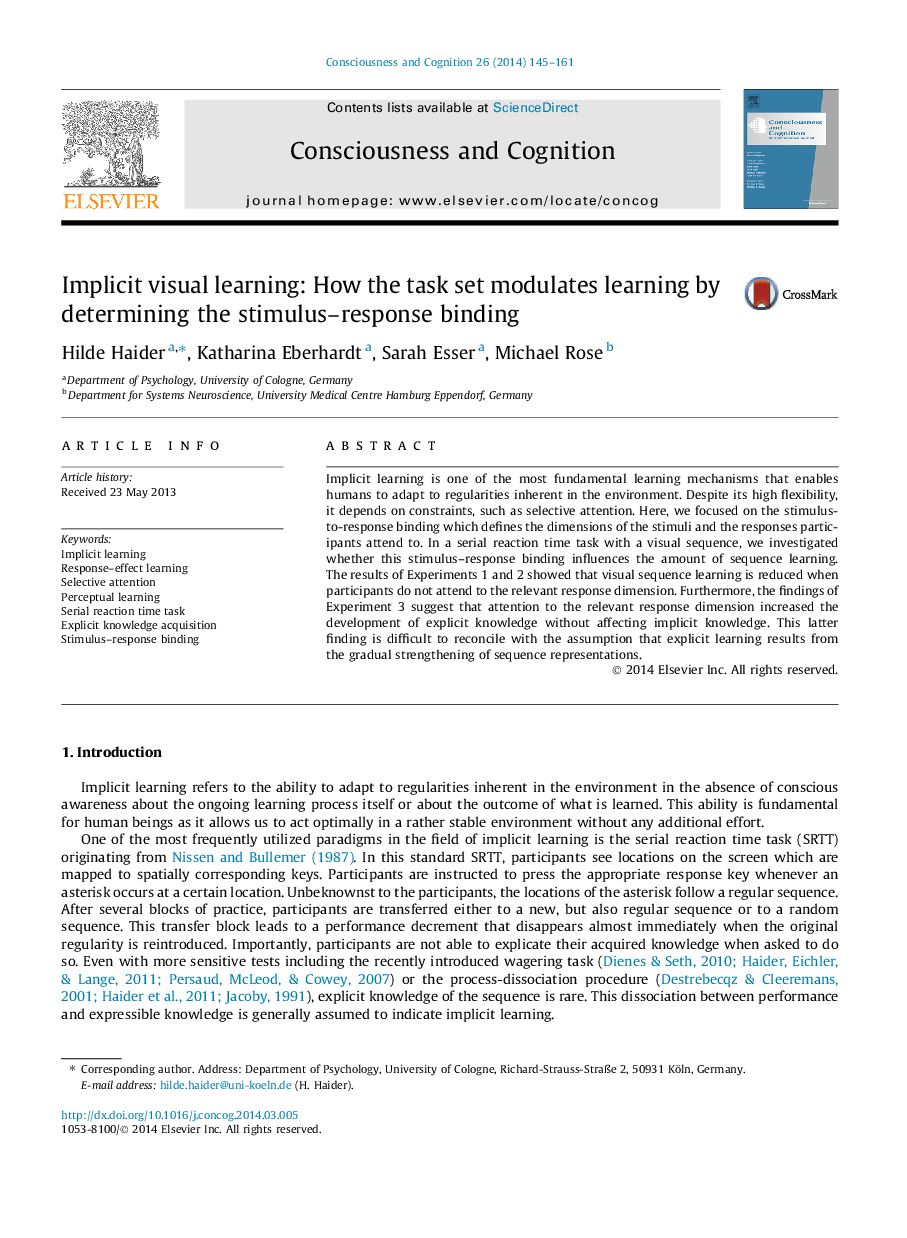| Article ID | Journal | Published Year | Pages | File Type |
|---|---|---|---|---|
| 7290182 | Consciousness and Cognition | 2014 | 17 Pages |
Abstract
Implicit learning is one of the most fundamental learning mechanisms that enables humans to adapt to regularities inherent in the environment. Despite its high flexibility, it depends on constraints, such as selective attention. Here, we focused on the stimulus-to-response binding which defines the dimensions of the stimuli and the responses participants attend to. In a serial reaction time task with a visual sequence, we investigated whether this stimulus-response binding influences the amount of sequence learning. The results of Experiments 1 and 2 showed that visual sequence learning is reduced when participants do not attend to the relevant response dimension. Furthermore, the findings of Experiment 3 suggest that attention to the relevant response dimension increased the development of explicit knowledge without affecting implicit knowledge. This latter finding is difficult to reconcile with the assumption that explicit learning results from the gradual strengthening of sequence representations.
Related Topics
Life Sciences
Neuroscience
Cognitive Neuroscience
Authors
Hilde Haider, Katharina Eberhardt, Sarah Esser, Michael Rose,
